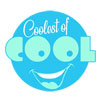-
Table of Contents
The Influence of Gothic Rock and Darkwave on Fashion Trends
Gothic rock and darkwave, two music genres that emerged in the late 1970s and early 1980s, have had a profound impact on modern culture. From their haunting melodies to their brooding lyrics, these genres have influenced not only the music scene but also fashion trends. Yes, you heard it right – fashion trends! Who would have thought that the music you listen to could dictate what you wear? Well, in the case of gothic rock and darkwave, it certainly does.
When you think of gothic rock and darkwave, images of black clothing, leather jackets, and heavy makeup may come to mind. And you wouldn’t be wrong! These genres have given rise to a unique fashion subculture that embraces all things dark and mysterious. It’s like Halloween every day for these fashion-forward individuals.
One of the most iconic fashion trends associated with gothic rock and darkwave is the all-black ensemble. Black is not just a color for these fashionistas; it’s a way of life. From head to toe, they embrace the darkness, donning black leather jackets, black skinny jeans, and black combat boots. It’s like they’re auditioning for a role in a Tim Burton movie!
But it’s not just about the color black; it’s also about the accessories. Gothic rock and darkwave enthusiasts love to adorn themselves with silver jewelry, often featuring symbols like crosses, skulls, and bats. It’s like they’re trying to channel their inner vampire or witch. Who needs sunlight when you can rock a killer silver pendant?
And let’s not forget about the makeup. Dark, smoky eyes are a staple for both men and women in this fashion subculture. They take the phrase “raccoon eyes” to a whole new level. But hey, who needs a good night’s sleep when you can look like you’ve been up all night summoning spirits?
But it’s not just the clothing and accessories that have been influenced by gothic rock and darkwave. These genres have also had a significant impact on hairstyles. Think big, teased hair with lots of volume and a touch of rebellion. It’s like they’re trying to defy gravity with their hair. Move over, gravity, gothic rock and darkwave are here to challenge the laws of physics!
Now, you might be thinking, “Who in their right mind would dress like this?” Well, my friend, you’d be surprised. Gothic rock and darkwave fashion has gained a cult following, with dedicated fans all over the world. They embrace their unique style and wear it with pride. And who can blame them? It takes a certain level of confidence to rock a black leather jacket in the middle of summer.
So, the next time you see someone dressed head to toe in black, with silver jewelry and smoky eyes, don’t be quick to judge. They might just be a fan of gothic rock or darkwave, expressing themselves through their fashion choices. After all, fashion is all about self-expression, and what better way to express yourself than by embracing your dark side?
In conclusion, gothic rock and darkwave have left an indelible mark on modern culture, including fashion trends. From the all-black ensembles to the silver jewelry and smoky eyes, these genres have given rise to a unique fashion subculture that embraces the darkness. So, if you’re feeling a little rebellious and want to channel your inner vampire, why not give gothic rock and darkwave fashion a try? Who knows, you might just find your new favorite style.
Exploring the Impact of Gothic Rock and Darkwave on Music Genres
Gothic rock and darkwave, two music genres that emerged in the late 1970s and early 1980s, have had a profound impact on modern culture. From their haunting melodies to their brooding lyrics, these genres have captivated audiences and influenced a wide range of artistic expressions. In this article, we will delve into the effects of gothic rock and darkwave on music genres, exploring how they have shaped the musical landscape and left an indelible mark on popular culture.
One cannot discuss the impact of gothic rock and darkwave without acknowledging their influence on other music genres. These genres have served as a breeding ground for experimentation and innovation, inspiring countless musicians to push the boundaries of their craft. From the gloomy atmospheres of post-punk to the ethereal sounds of dream pop, gothic rock and darkwave have left their fingerprints all over the musical spectrum.
Transitional phrase: With their melancholic melodies and introspective lyrics, gothic rock and darkwave have also played a significant role in shaping the emotional landscape of modern music.
The introspective nature of gothic rock and darkwave has resonated with listeners, providing an outlet for those seeking solace in the darker corners of their emotions. These genres have given voice to feelings of sadness, longing, and despair, allowing listeners to embrace their inner darkness and find solace in the music. Whether it’s the haunting vocals of Siouxsie Sioux or the brooding lyrics of The Cure, gothic rock and darkwave have become a sanctuary for those who find comfort in the shadows.
Transitional phrase: However, the impact of gothic rock and darkwave extends beyond the realm of music.
These genres have seeped into various aspects of popular culture, influencing fashion, literature, and even film. The gothic aesthetic, characterized by its dark and romantic imagery, has become a staple in alternative fashion. From the black leather jackets to the heavy eyeliner, gothic rock and darkwave have inspired countless fashion trends, giving rise to a subculture that embraces the macabre and the mysterious.
Transitional phrase: Moreover, gothic rock and darkwave have also left their mark on literature and film.
The brooding themes and atmospheric soundscapes of these genres have found their way into the pages of gothic novels and the frames of horror films. From the works of Edgar Allan Poe to the films of Tim Burton, gothic rock and darkwave have provided the perfect soundtrack for tales of darkness and despair. The haunting melodies and melancholic lyrics have become synonymous with the gothic genre, adding an extra layer of depth and emotion to these artistic expressions.
Transitional phrase: In conclusion, gothic rock and darkwave have had a profound impact on modern culture, shaping music genres and influencing various aspects of popular culture.
From their influence on other music genres to their role in shaping the emotional landscape of modern music, gothic rock and darkwave have left an indelible mark on the musical landscape. Moreover, their influence extends beyond music, permeating fashion, literature, and film. The gothic aesthetic and introspective themes have become synonymous with these genres, creating a subculture that embraces the darkness and finds solace in the shadows. So, the next time you find yourself captivated by a haunting melody or drawn to the macabre, remember the impact of gothic rock and darkwave on modern culture, and embrace the beauty in the darkness.
Analyzing the Role of Gothic Rock and Darkwave in Contemporary Art and Literature
Gothic rock and darkwave, two genres that emerged in the late 1970s and early 1980s, have had a profound impact on modern culture. From their haunting melodies to their brooding lyrics, these genres have left an indelible mark on contemporary art and literature. In this section, we will delve into the role of gothic rock and darkwave in shaping the artistic landscape of today.
Let’s start by examining the influence of gothic rock on contemporary art. With its gloomy atmosphere and introspective themes, gothic rock has provided a rich source of inspiration for artists across various mediums. Painters, sculptors, and photographers have all drawn from the dark aesthetic of gothic rock to create evocative and thought-provoking works.
One notable example is the renowned artist Damien Hirst, who often incorporates gothic elements into his pieces. His iconic shark suspended in formaldehyde, titled “The Physical Impossibility of Death in the Mind of Someone Living,” captures the eerie allure of gothic rock. The juxtaposition of life and death, a recurring theme in gothic rock, is brilliantly portrayed in Hirst’s work.
In literature, gothic rock has also left its mark. Many contemporary authors have been influenced by the genre’s brooding atmosphere and introspective lyrics. One such author is Neil Gaiman, whose dark and fantastical novels have captivated readers worldwide. Gaiman’s works, such as “American Gods” and “Neverwhere,” often explore themes of mortality and the supernatural, echoing the haunting melodies of gothic rock.
Moving on to darkwave, this genre has had a similar impact on contemporary art and literature. Darkwave, with its ethereal soundscapes and melancholic lyrics, has become a staple in the artistic world. Its dreamlike quality has inspired countless visual artists to create ethereal and otherworldly pieces.
Take the work of photographer Brooke Shaden, for instance. Shaden’s surreal and haunting photographs often evoke the same sense of melancholy found in darkwave music. Her use of muted colors and ethereal settings transports viewers to a world that exists somewhere between reality and fantasy, much like the music of darkwave.
In literature, darkwave has also found a home. Authors like Haruki Murakami have embraced the genre’s introspective and atmospheric qualities in their writing. Murakami’s novels, such as “Kafka on the Shore” and “Norwegian Wood,” often feature characters grappling with existential questions and navigating a world that is both familiar and strange, much like the music of darkwave.
In conclusion, gothic rock and darkwave have had a profound impact on modern culture, shaping the artistic landscape in both art and literature. From the haunting melodies of gothic rock to the ethereal soundscapes of darkwave, these genres have provided a rich source of inspiration for artists and authors alike. Whether it’s Damien Hirst’s gothic-inspired artwork or Neil Gaiman’s dark and fantastical novels, the influence of gothic rock and darkwave can be felt throughout contemporary art and literature. So next time you find yourself immersed in a gloomy painting or lost in a melancholic novel, remember the role that gothic rock and darkwave have played in shaping the artistic world we live in today.

